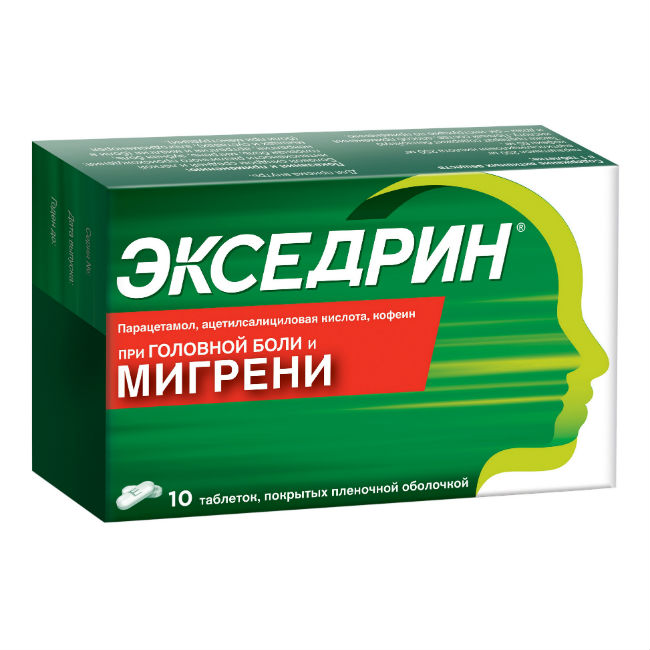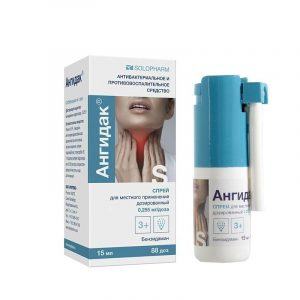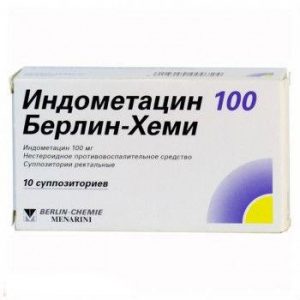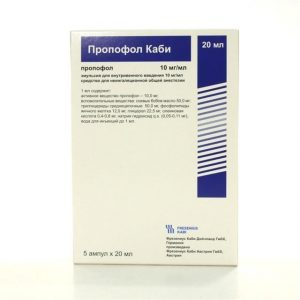Description
About the product
Excedrine is a non-prescription drug in the form of tablets that is intended to relieve migraines.
Excedrine has a threefold effect: acetylsalicylic acid and paracetamol relieve headaches, and caffeine enhances the effects of the combination. *, ** In addition, Exedrine helps to relieve concomitant migraines symptoms such as nausea and hypersensitivity to light and sound. *
Excedrin helps relieve pain and other migraine symptoms within 30 minutes! *
* Richard B. Lipton, MD Walter F. Stewart, PhD, MPH Robert E. Ryan, Jr, MD Joel Saper, MD Stephen Silberstein, MD Fred Sheftell, MD. ARCH NEUROL / VOL 55, FEB 1998
** Instructions for medical use, RU Ñ N009980
Description
Tablets, film-coated, white, oblong, with E engraving on one side
cross-sectional view – the core is white or almost white.
Release form
Tablets film-coated
Pharmacological action
Excedrine ® is a combined preparation containing paracetamol, acetylsalicylic acid and caffeine.
Paracetamol has an analgesic, antipyretic and extremely mild anti-inflammatory effect due to its effect on the thermoregulation center in the hypothalamus and mild ability to inhibit prostaglandin synthesis in peripheral tissues.
Acetylsalicylic acid has analgesic, antipyretic and anti-inflammatory effects. It quickly relieves pain, especially caused by the inflammatory process, and also moderately inhibits platelet aggregation and slows down the process of thrombosis, improving microcirculation in the focus of inflammation.
Caffeine increases the reflex excitability of the spinal cord, stimulates the respiratory and vasomotor centers, dilates the blood vessels of the skeletal muscles, brain, heart, kidneys, and reduces platelet aggregation.
Reduces drowsiness, fatigue, increases mental and physical performance. In this combination, caffeine in a small dose practically does not have a stimulating effect on the central nervous system, but it helps to normalize the tone of cerebral vessels and accelerate blood flow in it.
Indications
Medium and light intensity pain syndrome of various origins: headache
migraine
toothache
neuralgia
arthralgia and myalgia (muscle and joint pain)
algodismenorea (pain during menstruation).
Contraindications
Hypersensitivity to any of the components in the preparation
erosive and ulcerative gastrointestinal tract in the acute phase
gastrointestinal bleeding
complete or incomplete combination of bronchial asthma, acetylsalicylic acid or another non-steroidal anti-inflammatory drug
glucose-6-phosphate dehydrogenase deficiency pregnancy
lactation increased irritability
sleep disturbances
children under 15 years of age (risk of developing Reye syndrome in children with hyperthermia due to viral diseases).
Use caution with gout, liver disease, headaches associated with head trauma, taking anticoagulants, hypoglycemic agents, gout or arthritis, as well as taking medications containing acetylsalicylic acid or other painkillers and antipyretic drugs.
Pregnancy and lactation
Although acetylsalicylic acid can be used in the second trimester of pregnancy, the safety of this combination in pregnant and lactating women has not been studied, therefore, the drug is contraindicated in pregnant women (in all trimesters) and breast-feeding.
Special instructions
If symptoms persist, worsen or new symptoms occur after taking the drug, you should consult a doctor immediately. When taking the drug at the recommended dose, the same amount of caffeine enters the body as is contained in one cup of coffee, therefore, it is necessary to reduce the consumption of caffeinated products during treatment with this drug in order to avoid the development of nervous excitement, irritability, insomnia and heart palpitations against the background of an overdose of caffeine.
If you suspect an overdose, you should immediately seek medical help, even if there are no symptoms. You should refrain from drinking alcohol while taking the drug due to the increased risk of liver damage and gastrointestinal bleeding. Since acetylsalicylic acid slows down blood coagulation, the patient who is to undergo surgery should warn the doctor in advance about taking the drug.
Acetylsalicylic acid in low doses reduces uric acid excretion, in this connection, in patients with a predisposition, the drug can provoke an attack of gout. With prolonged use of the drug, control of peripheral blood and the functional state of the liver is necessary.
Impact on the ability to drive vehicles and work with mechanisms
No information was reported on the effect of the drug on the ability to drive a car and work with mechanisms.
Composition
1 tablet contains paracetamol 250 mg,
acetylsalicylic acid 250 mg,
caffeine 65 mg
Dosage and administration of
The drug is taken orally during or after a meal.
Adults and teenagers from 15 years of age: 1 tablet every 4-6 hours.
At the first sign of migraine, take 2 tablets.
The average daily dose is 3-4 tablets per day, the maximum daily dose is 6 tablets per day.
After taking 2 tablets, relief of headache and other types of pain usually occurs quickly – after 15 minutes, with migraines, relief usually occurs after 30 minutes.
In case of pain, the drug should not be taken for more than 5 days without consulting a doctor. In case of migraine, the drug should not be taken for more than 3 days without consulting a doctor.
Side effects
Gastralgia, nausea, vomiting, hepatotoxicity, nephrotoxicity, erosive ulcerative lesions of the gastrointestinal tract, allergic reactions, tachycardia, increased blood pressure, bronchospasm.
With prolonged use – dizziness, headache, visual impairment, tinnitus, decreased platelet aggregation, hypocoagulation, hemorrhagic syndrome (nasal bleeding, bleeding gums, purpura, etc.), renal impairment with papillary necrosis, deafness, malignant exudative erythema (Stevens-Johnson syndrome), toxic epidermal necrolysis (Lynderobes Syndrome, Lyromedboli syndrome) , disorders of the nervous system and psyche, vomiting, impaired liver function).
Drug Interaction
The drug may potentiate the effects of heparin, indirect coagulants, reserpine, steroid hormones and hypoglycemic drugs.
Co-administered with other NSAIDs, methotrexate increases the risk of side effects. Reduces the effectiveness of spironolactone, furosemide, antihypertensive drugs, as well as anti-gout drugs that promote uric acid. Barbiturates, rifampicin, salicylamide, antiepileptic drugs and other inducers of microsomal liver enzymes contribute to the formation of toxic metabolites of paracetamol that affect liver function.
Metoclopramide accelerates the absorption of paracetamol. Under the action of paracetamol, the elimination half-life of chloramphenicol is increased 5-fold. Re-administration of paracetamol may enhance the action of anticoagulants (coumarin derivatives).
Concurrent intake of paracetamol, acetylsalicylic acid and alcoholic beverages increases the risk of hepatotoxic effects. Caffeine accelerates the absorption of ergotamine.
Overdose
Symptoms due to the presence of paracetamol (when taken in doses of more than 10-15 g / day): during the first 24 hours, pale skin, nausea, vomiting, anorexia, abdominal pain, impaired glucose metabolism, metabolic acidosis. Symptoms of impaired liver function may appear 12-48 hours after an overdose. In case of severe overdose, hepatic failure with progressive encephalopathy, coma, death acute renal failure with tubular necrosis (including in the absence of severe liver damage) arrhythmia, pancreatitis. Hepatotoxic effect in adults manifests itself when taking 10 g or more.
Symptoms due to the presence of acetylsalicylic acid (when taken in doses of more than 150 mg / kg): for mild intoxications – nausea, vomiting, tinnitus, blurred vision, dizziness, severe headache. In severe poisoning – hyperventilation of the lungs of central origin (shortness of breath, suffocation, cyanosis, cold clammy sweat, respiratory paralysis), respiratory acidosis. The greatest risk of chronic intoxication is observed in children and the elderly when taken for several days more than 100 mg / kg / day. With moderate and severe poisoning, hospitalization is necessary.
Symptoms due to the presence of caffeine (when taken in doses of more than 300 mg / day): gastralgia, agitation, anxiety, agitation, motor anxiety, confusion, delirium, dehydration, tachycardia, arrhythmia, hyperthermia, rapid urination, headache, increased tactile or pain sensitivity , tremor or muscle twitching nausea and vomiting, sometimes with blood ringing in the ears, epileptic seizures (in acute overdose – tonic-clonic).
Treatment: control of the acid-base state and electrolyte balance. Depending on the state of metabolism – the introduction of sodium bicarbonate, sodium citrate or sodium lactate. Increasing alkalinity enhances the elimination of acetylsalicylic acid by alkalizing urine. Gastric lavage in the first 4 hours, provocation of vomiting, intake of activated carbon, laxatives, administration of SH-group donors and precursors of glutathione methionine synthesis within 8-9 hours after overdose and acetylcysteine within 8 hours
Storage Conditions
At a temperature not exceeding 25 ° C.
Keep out of the reach and sight of children.
Expiration
3 years.
active substance
Acetylsalicylic acid, Caffeine, Paracetamol
pharmacies terms of sale
pharmacy terms sdl65 pharmacy terms sdl65 pharmacy srdlpp865 srdl pharmacy terms and conditions from
pharmacies Without a prescription
Bristol-Myers Squibb, USA




